Sign is not just a verification tool; it is laying the foundation for the future trust architecture, with a vision to "define trust and make it programmable."
Compiled by: Deep Tide TechFlow
This report, written by Tiger Research, analyzes Sign's successful experiences in building the "Orange Dynasty" community, developing the profitable TokenTable infrastructure, and promoting the trust-based Sign protocol vision in the Web3 ecosystem.
Summary
Community: Sign has successfully built a thriving "Orange Dynasty" community of over 50,000 members through cultural symbols (orange and "SignGlasses"), a fair incentive mechanism based on Soulbound Tokens (SBT), and ongoing interactions. This community provides strong support for Sign.
Fundamentals: Sign generated $15 million in revenue in 2024 through its token distribution platform TokenTable, which has processed over $4 billion in token airdrop transactions. The company has raised $28 million to date from investors including YZi Labs and Sequoia Capital, demonstrating its strong position in the market.
Vision: Sign is expanding from TokenTable to the Sign protocol, a blockchain-based authentication system. This system aims to address issues such as Sybil attacks while building a programmable trust infrastructure with practical application potential in real-world assets (RWA), central bank digital currencies (CBDC), and government collaborations.
The Role of Community in the Web3 Industry
Communities play a crucial role in brand development. They provide members with a sense of identity and belonging, creating emotional bonds that enhance loyalty. This connection aids in the organic growth of the brand and strengthens its resilience during crises.
Community building is not a new concept—it has long played an important role in traditional industries. For example, Lululemon achieved global expansion by building a fitness community of 13 million members. Users actively spread brand values in the market. Meanwhile, Harley-Davidson successfully navigated a major business crisis in the 1980s by forming the Harley Owners Group (H.O.G.), rebuilding brand strength amid fierce competition from Japanese motorcycle brands.
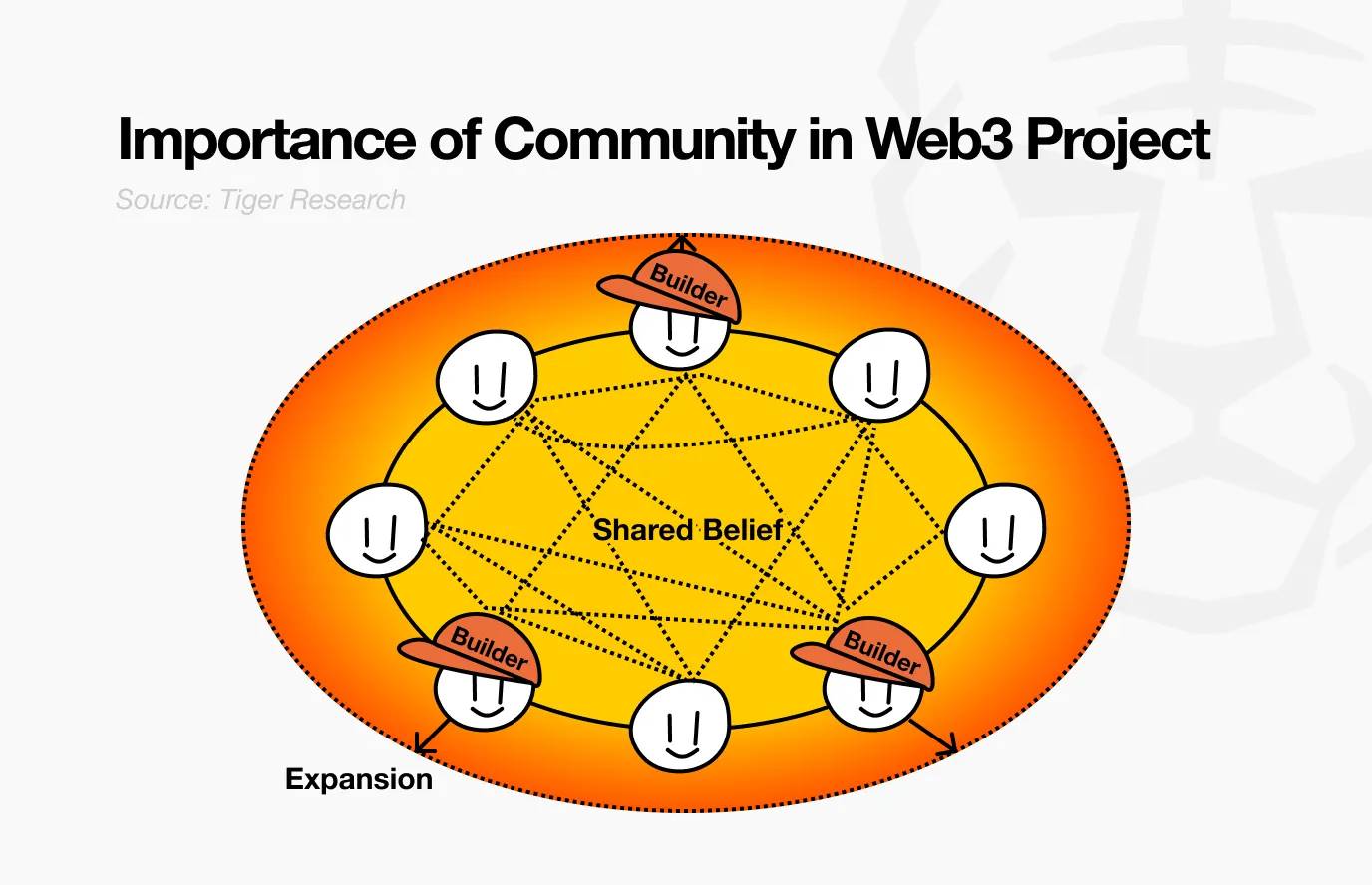
In the Web3 industry, the role of community is even more significant. Web3 operates on a culture-centered collaborative basis. In a decentralized environment, participants unite around shared beliefs and values rather than relying on centralized authority. Community members are not just consumers; they are often voluntary contributors and builders, further amplifying the community's importance in project success.
Academic research supports this view. Gartner and Moro (2024) analyzed data from 3,644 initial coin offering (ICO) projects and found a strong correlation between the number of followers on social media platforms (such as Twitter and Telegram) and the likelihood of projects reaching their funding goals.
In contrast, traditional professional metrics (such as the educational background and experience of the management team) have minimal impact on success. This indicates that in the Web3 ecosystem, community support and participation are better predictors of success than traditional credentials. Projects with high online visibility and strong community engagement are more likely to achieve investment goals and maintain long-term growth.
Community: How the Orange Dynasty Was Built
While many Web3 projects theoretically emphasize the importance of community, few succeed in practice. Most projects focus only on initial incentives or large peripheral events, failing to create a culture that participants can truly resonate with.
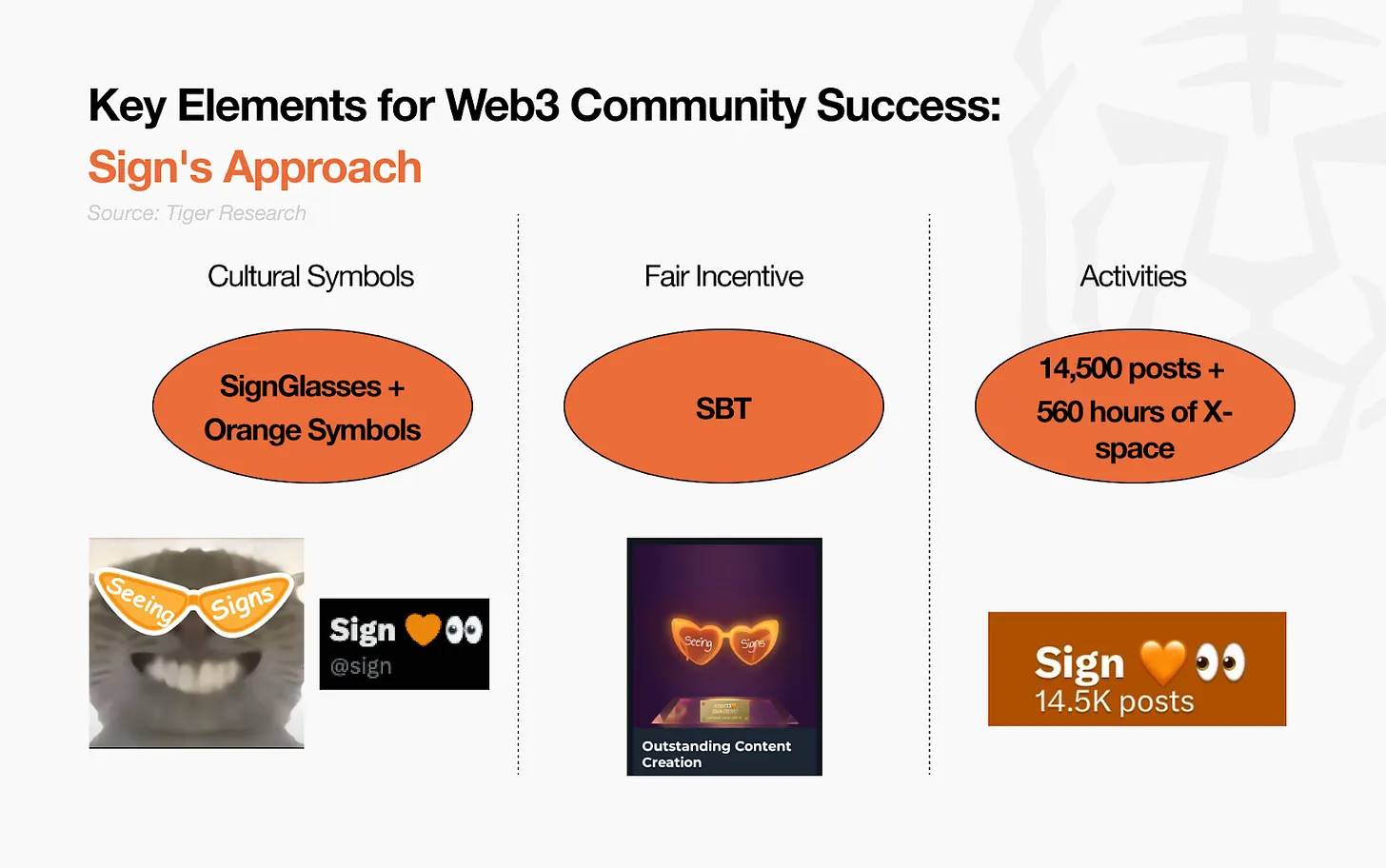
The three key elements for building a sustainable Web3 community are:
Establishing a sense of identity and belonging through cultural symbols;
Fair incentive mechanisms to stimulate participation;
Ongoing activities and communication channels to keep members engaged.
When these elements organically combine and reinforce each other, a true community can be formed.
Sign is a powerful example of this approach. Its community, the "Orange Dynasty" (Orange Dynasty), has built a strong sense of identity through consistent use of color and language.
2.1. Establishing a Strong Sense of Identity and Belonging Through Cultural Symbols

Source: X
Orange, as the community's adopted signature color, has transcended brand elements to become a cultural symbol. As a color psychologically associated with vitality and enthusiasm, it injects life into the community and has evolved into a unique symbol—the "SignGlasses" (signature glasses), a stylized pair of sunglasses representing the community's identity.
On the X (formerly Twitter) platform, users can easily become part of the community through simple visual adjustments—such as adding an orange background to their profile or incorporating sunglasses elements into their avatars—without completely changing their personal brand. This low-barrier participation encourages voluntary joining, enhances cohesion among community members, and drives organic growth.
2.2. Fair Incentive Mechanisms to Encourage Participation
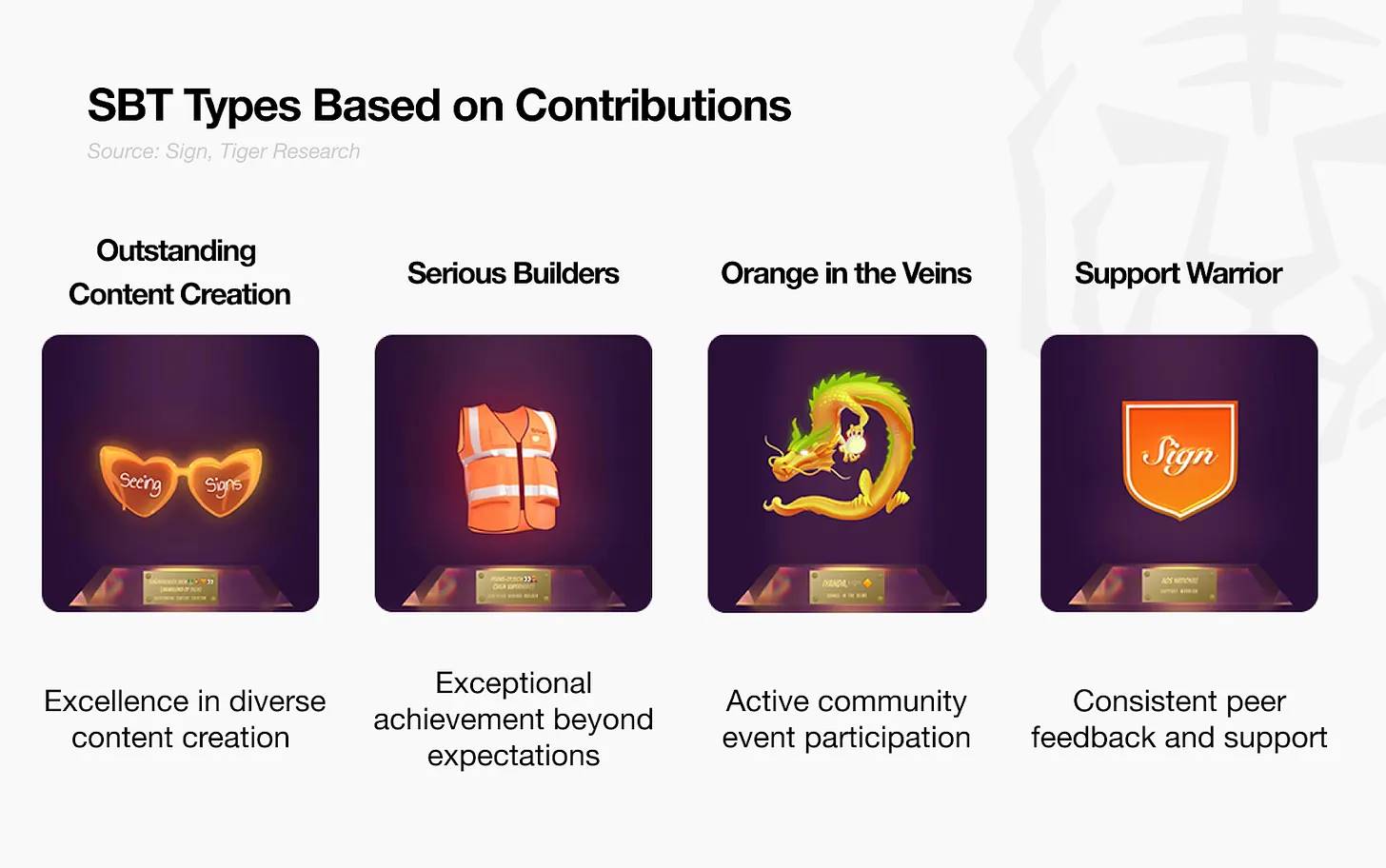
Sign's second major advantage lies in its unique incentive mechanism, which assigns value to meaningful contributions through a non-transferable token system—Soulbound Tokens (SBT).
The uniqueness of this system is its emphasis on "quality" rather than merely focusing on superficial metrics. Sign does not reward "quantitative" behaviors such as the number of posts or likes; instead, it recognizes genuine participation and value creation. SBTs are divided into four categories and are non-tradable, effectively preventing manipulation and ensuring that personal honors are earned through effort rather than purchased.
2.3. Ongoing Activities and Communication Channels to Keep Members Engaged

Source: Sign
Continuous communication and activities are the ultimate key factors for success. Sign demonstrates its passion and commitment to the community through over 14,500 posts and more than 560 hours of X Space (formerly Twitter Space) operation time.
The final success factor is ongoing communication and interaction. Sign has proven its enthusiasm through over 14,500 posts and more than 560 hours of X Space meetings.
Notably, the official presence of the Sign project on the X platform is not centralized around the official account @sign but is operated by community accounts. This structure allows new users to engage with project-driven content through community-driven channels, experiencing Sign's culture and values before delving into its core mechanisms.
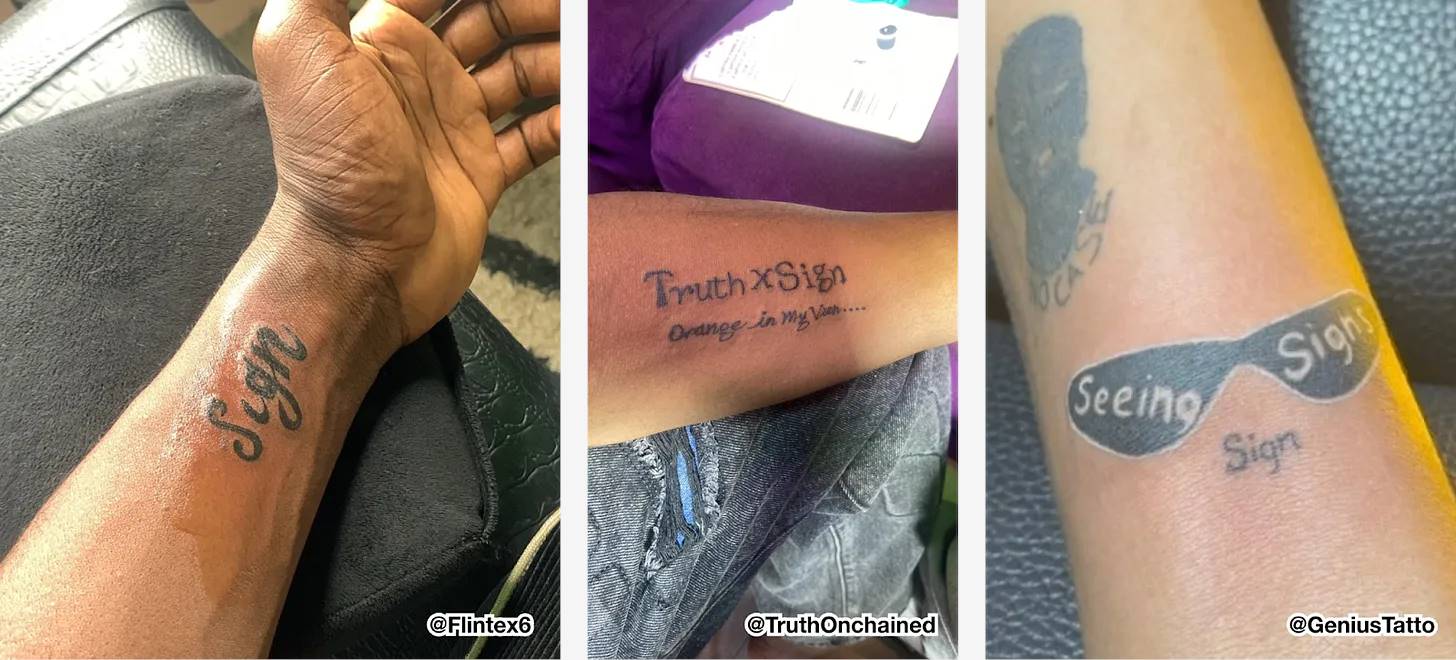
Source: X
Through these communication strategies, Sign has successfully nurtured a self-sustaining community of over 50,000 members. This deep sense of belonging is evident—some members even tattoo the Sign logo on their bodies, a striking display of loyalty that showcases the project's cultural impact.
Fundamentals: TokenTable's Substantial Achievements
Having a strong community is not enough—achieving long-term sustainability also requires substantial products and a clear vision. In 2024, Sign generated over $15 million in revenue through its token distribution platform "TokenTable." This level of revenue is extremely rare in the Web3 space, providing a solid support foundation for the community and further enhancing its influence.
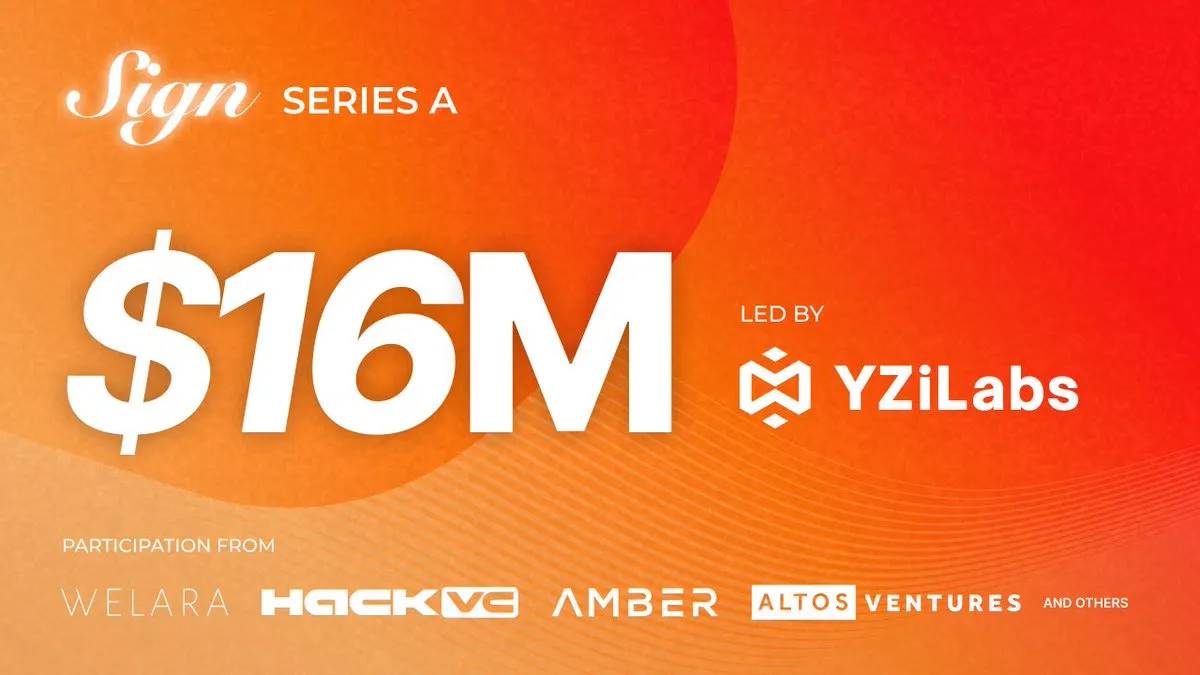
Source: Sign
These achievements have attracted widespread attention from investors. As of now, Sign has raised a total of $28 million. This includes $12 million raised in the seed round; in January 2025, an additional $16 million was raised in a Series A round led by CZ and YZi Labs (formerly Binance Labs).
Notably, all three regional divisions of Sequoia Capital—America, China, and India/Southeast Asia—participated in the seed round. Sequoia typically invests through a single regional division, making Sign a rare exception. This cross-regional participation reflects investors' high confidence in Sign's global potential.
3.1. Current Status of TokenTable
TokenTable has positioned itself as the "Goldman Sachs" of the Web3 space. Just as Goldman Sachs is responsible for stock issuance, investor introduction, and market making in traditional finance, TokenTable serves as core infrastructure in the blockchain ecosystem, focusing on token issuance, distribution, and liquidity management.
The complexity and risks associated with token operations explain the importance of such services in the Web3 ecosystem. Token issuance involves writing and auditing smart contract code, which requires highly specialized technical skills. Distributing tokens to thousands or even millions of users is a technically challenging task, where any small error can lead to significant losses. Additionally, managing lock-up schedules for investors and team members requires high transparency and precision, as manual operations increase the risk of errors or misconduct.
TokenTable addresses these challenges by providing standardized infrastructure, thereby streamlining the entire process. This allows project teams to focus their efforts on tokenomics and product development rather than expending resources on operational risk management.
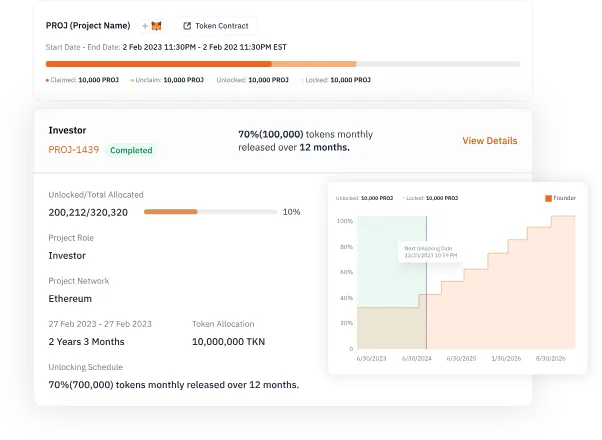
Source: Sign
Airdrop Management: Supports automatic token distribution to community users. For example, Kaito used the platform to airdrop tokens to over 100,000 users.
Unlock Management: Arranges token unlock times for investors or team members through smart contracts. Several projects, including Starknet, Dogs, and Zetachain, have used TokenTable's Unlocker tool to handle this process transparently and securely.
Over-the-Counter (OTC) Brokerage Services: Facilitates large token trades by transferring the right to withdraw unlocked tokens. This is similar to selling an apartment directly—allowing large amounts of tokens to circulate securely without affecting centralized exchange prices.
TokenTable's client portfolio includes several well-known projects, such as Starknet, ZetaChain, DOGS, Mocaverse, and projects based on TON (Telegram Open Network), such as Notcoin and GAMEE. In the TON ecosystem alone, TokenTable has distributed over $2 billion in assets to 40 million users.
3.2. TokenTable in 2025
TokenTable's primary revenue sources come from airdrop claim fees and OTC service fees. To date, the platform has processed over $4 billion in token airdrops and unlocks, connecting over 40 million users and investors.

The demand for TokenTable's services is not limited to large projects. With the rise of token issuance platforms, the number of small Web3 projects is rapidly increasing. It is expected that by 2027, approximately 1.9 million projects will enter the market, many of which will conduct airdrops or require structured token management. Therefore, TokenTable's potential customer base is expected to expand significantly in the coming years.
TokenTable Lite: This is a simplified version designed for small projects with fewer than 100,000 users. It requires no approval, features an intuitive user interface, and a streamlined setup process, making it easy for anyone looking to create and distribute memecoins, fan tokens, or AI agent tokens.
TokenTable Dashboard: This is a transparency tool for investors that provides real-time data on on-chain token allocation and distribution plans. It not only shows the distribution of tokens among stakeholders, exchanges, and wallets but also goes beyond the information disclosed in project whitepapers.
FutureToken Technology: A next-generation derivative tool designed to revolutionize the OTC model. It is not merely about transferring withdrawal rights but creating standardized financial instruments based on locked tokens that can be freely traded in secondary markets. This is akin to converting apartment rental rights into securities and trading them on stock exchanges, thereby enhancing investor protection, reducing information asymmetry, and increasing liquidity in secondary markets.
These product expansions aim to support broader adoption, lower the entry barriers for new projects, and unlock additional revenue sources. With the support of a loyal community and a scalable revenue model, Sign is well-prepared for long-term growth.
Vision: The Trust-Based Sign Protocol
Sign is expanding its focus from TokenTable to a broader authentication system. While TokenTable has established effective connections between token distribution and investors, it faces a key limitation: the inability to associate digital wallet addresses with real user identities.
This gap makes it difficult to address issues such as Sybil attacks. If wallets could be reliably bound to individual users, it would be possible to detect and prevent users from claiming airdrops through multiple accounts. Currently, this work relies on analyzing wallet interactions to infer suspicious behavior. Although blockchain systems are designed to operate without trust, in certain scenarios—especially in airdrop distribution or governance—understanding the real identities behind addresses becomes essential.
Recognizing this challenge, Sign has developed the Sign Protocol, a trust system designed to enable easy and reliable authentication in both physical and digital spaces. At its core is the concept of "Attestation," which digitally confirms and records the authenticity of specific information or claims, allowing others to verify its reliability at any time.
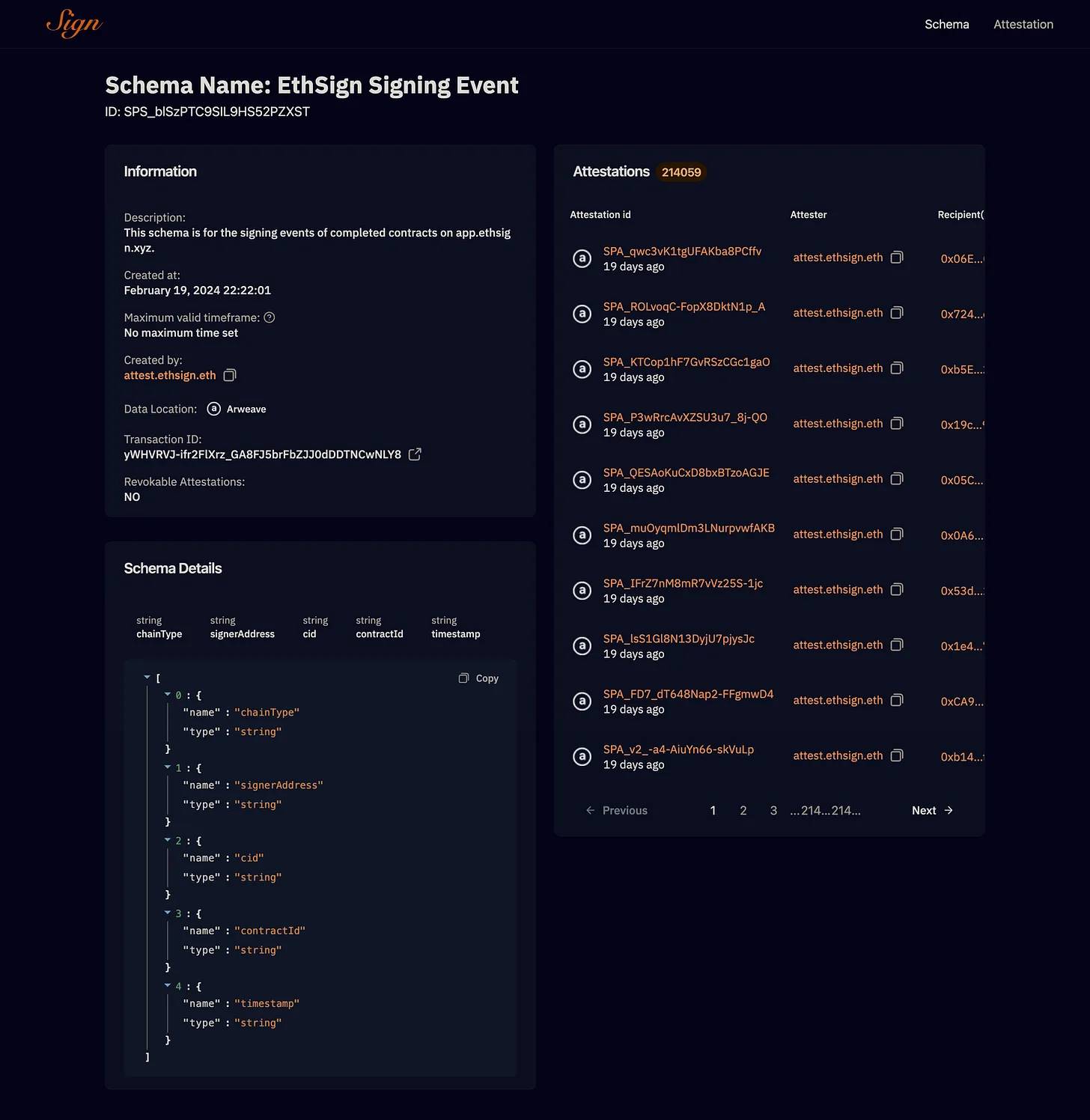
**For example, when a government confirms that "this person is a citizen of a specific country," this information can be recorded on-chain through a digital signature. Once stored in this manner, other institutions and services can easily verify its **authenticity. The Sign Protocol organizes these attestations through standardized templates (called “Schema”)—similar to how passports or ID cards follow a consistent format to manage identity data.

This system significantly improves the user experience. Users no longer need to repeat KYC (Know Your Customer) procedures across multiple platforms but can reuse one-time attestations created through the Sign Protocol. While the initial application scenarios focus on airdrop eligibility verification and preventing Sybil attacks, this framework shows potential in a broader range of areas requiring identity or qualification verification, especially in real-world assets (RWA) and central bank digital currencies (CBDC).
Real-world assets (RWA) refer to the concept of converting physical assets like real estate or stocks into digital tokens that can be traded on the blockchain. Compliance is crucial in this area. By managing verified investor qualifications through the Sign Protocol, the investment process can be streamlined. As real-world assets are brought on-chain, corresponding decentralized finance (DeFi) applications are expected to grow naturally.
At the same time, CBDC (central bank digital currency) distribution is another key application scenario. When governments wish to distribute digital currency on a large scale, combining TokenTable's large-scale distribution capabilities with the Sign Protocol's authentication infrastructure can enable efficient and secure deployment.
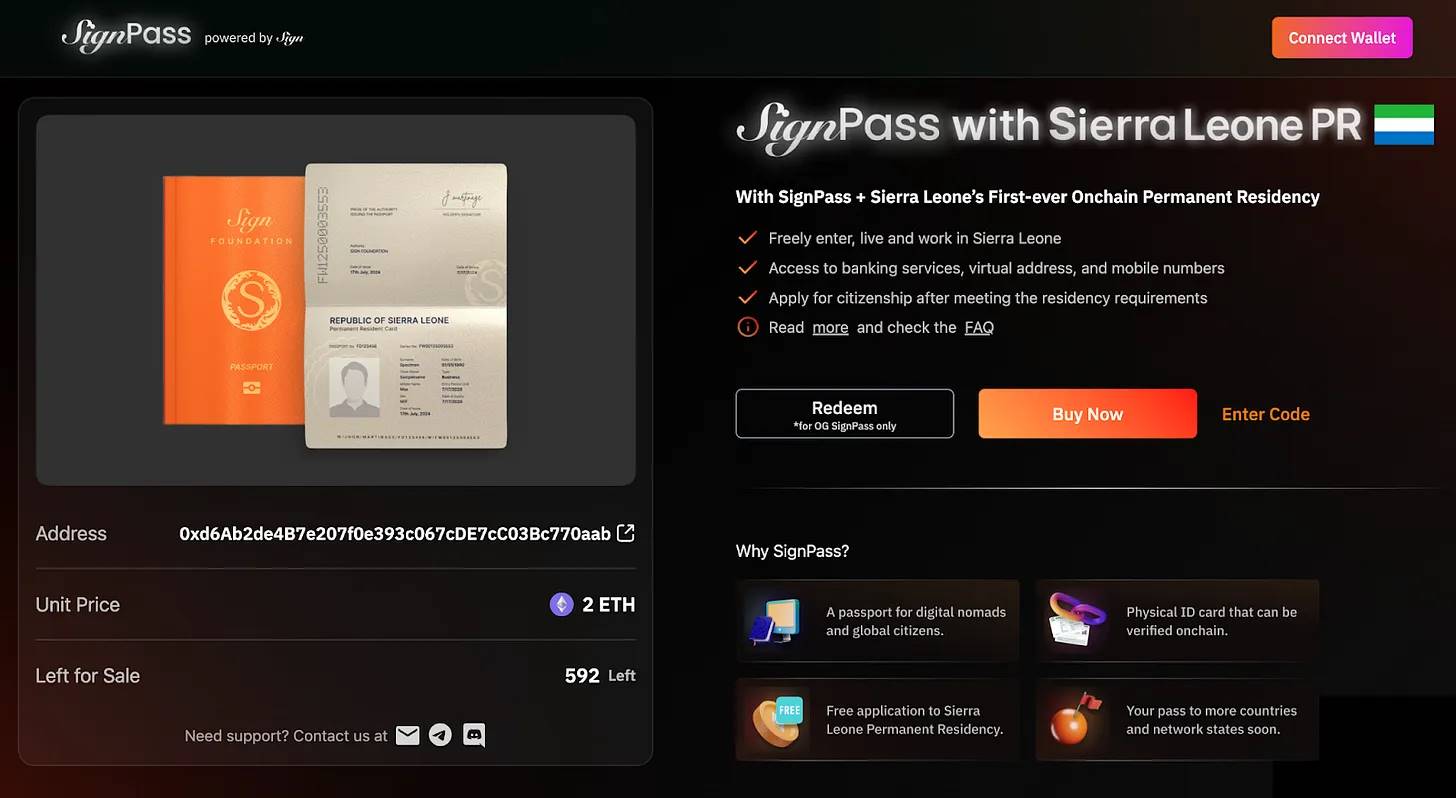
However, for Sign's attestations to truly evolve into a trust infrastructure, they must go beyond simple on-chain statements and gain recognition from real-world institutions and systems. To this end, Sign has already achieved significant milestones:
In Sierra Leone, the team built a blockchain-based digital ID and issued the world's first on-chain verifiable physical identity certification.
In the UAE, they collaborated with the Ras Al Khaimah government to automate public administration processes using blockchain.
Through collaboration with Cypher Capital and RAK DAO, they launched a 10-Year Residency Visa Program for Web3 entrepreneurs.
These milestones indicate that Sign is not only building technological infrastructure but also actively establishing trust in the real world.
Ultimately, Sign is not just a verification tool; it is laying the foundation for a future trust architecture, with a vision to "define trust and make it programmable." As the Web3 ecosystem matures, this foundational capability will become increasingly indispensable.
Sign: Community, Foundation, and Vision
Sign is a model project in the Web3 ecosystem, successfully achieving synchronized development of community building and commercial foundations. Unlike many projects that rely on token-driven funding before product launch, Sign expands its ecosystem around TokenTable, which has a mature revenue model, demonstrating an execution-first strategy.
Although the Sign protocol is still in its early stages, the team has shown strong execution capabilities through collaborations with governments, including the development of ID cards and crypto cards. These achievements not only serve as a powerful testament to the project's feasibility and long-term sustainability but also transcend abstract vision statements.
At the same time, Sign faces challenges in expanding its ecosystem relying solely on internal resources. To convert the current community's enthusiasm into sustained growth, the project needs to cultivate external builders aligned with its goals. This requires developing strategies around a strong cultural foundation for the project, enabling third-party services to be developed based on the Sign protocol.
Despite these challenges, Sign is widely regarded as a project with significant long-term potential, supported by both commercial achievements and a loyal community base. If the team can successfully expand the Sign protocol into a broader ecosystem, leveraging the successful experience of TokenTable, it could provide a new blueprint for sustainable Web3 growth.
Disclaimer
This report is partially funded by Sign but produced independently by our researchers, using reliable information sources. The findings, recommendations, and opinions in the report are based on information available at the time of publication and may change without notice. We do not accept any liability for losses arising from the use of this report or its contents, nor do we guarantee its accuracy or completeness. The information in the report may differ from other viewpoints. This report is for informational purposes only and does not constitute legal, business, investment, or tax advice. The securities or digital assets mentioned are for illustrative purposes only and do not constitute investment advice or an offer. This material is not directed at investors.
免责声明:本文章仅代表作者个人观点,不代表本平台的立场和观点。本文章仅供信息分享,不构成对任何人的任何投资建议。用户与作者之间的任何争议,与本平台无关。如网页中刊载的文章或图片涉及侵权,请提供相关的权利证明和身份证明发送邮件到support@aicoin.com,本平台相关工作人员将会进行核查。




